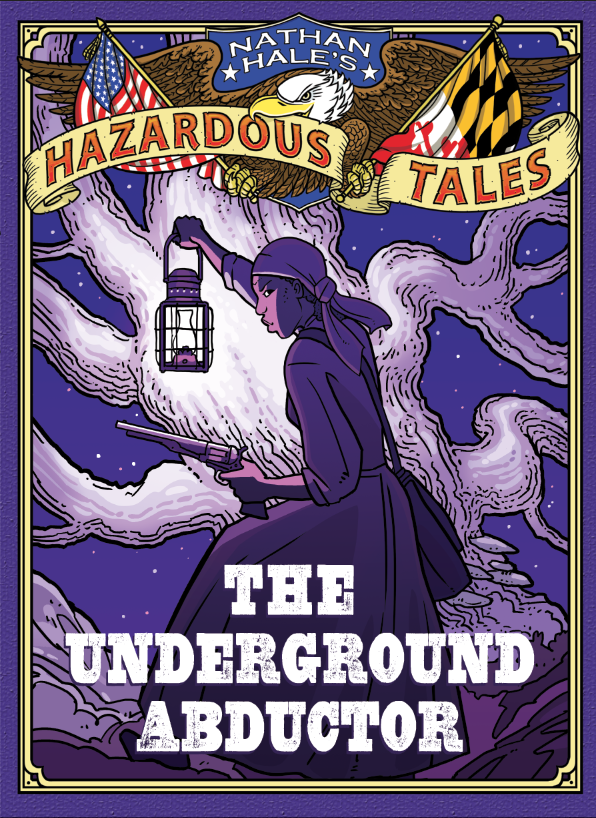Nathan Hale’s Hazardous Tales: The Underground Abductor (9 out of 10) Graphic Novel, 128 pages, Hardcover. 2015, Amulet Books.
It’s great when book series I love are doing well. Well enough that the series continues. That doesn’t always happen, which makes me hesitate to put all my lovin’ into one particular franchise. Happily, one of the current hits among history-based-graphic-novels-for-middle-grades is “Nathan Hale’s Hazardous Tales.” The series is written by to-me local guy Nathan Hale, and he’s finding a wider audience than you’d expect for such a narrow piece of the market. The audience is coming because the books are good. Having tackled subjects like the Revolutionary War, Civil War, the Donner Party, and World War I, he’s gone back to the 19th Century for his fifth book, “The Underground Abductor.”

“The Underground Abductor” is the story of Harriet Tubman, and is the first in the series that’s a biography of a single person. It’s a break in the formula that Hale has established, but is still able to use one woman’s story as an exemplar of what’s happening in the wider story of American History. In this case, slavery and the abolitionist movement in the antebellum South.
The format is the same as the other books in this series: American patriot/spy Nathan Hale is at the gallows, about to be executed by a Hangman and British Provost. As he’s about to die, he’s able to magically see all of American History, and entertains the Hangman and Provost with the tales, Sheherazade-style. At the beginning of this story, the Provost (stuffy, very British) says essentially “all of these stories are about how America is so great, so special, the best country ever…” which Hale admits to, but does say that the country has made many mistakes, and that slavery is one of the worst.
Hale condemns the horrors of slavery, but is still appropriate for the target audience.
Hale (the author) does a good job of laying out the history of slavery quickly getting us up to the 1830s, when Harriet Tubman was a young girl. Back then she was “Araminta Ross,” and she keeps that name for the half of the book before she escapes to freedom. Her story gives us a good look at what the institution of slavery was like in the south at the time…in a word, terrible. Hale is able to do this in a way that honors the pain and condemns the horrors of slavery, but is still appropriate for the target audience of 5th – 8th graders. I wouldn’t say it’s sanitized; he gets into the fugitive slave laws, and punishments including hobbling. He describes and shows the beating of Araminta and other slaves, and there are passages that are a hard read because of that. Throughout, Hale’s cartoony style of illustration is able to convey the humanity of these people, but soften some of the harder edges of history.
In the middle of telling Harriet Tubman’s story, Hale takes two small detours to tell other stories that fit into the same time period and subject: the Nat Turner Rebellion and the story of Frederick Douglass. He’s able to tell both succinctly, and their inclusion gives us a broader view of what was happening outside of Tubman’s relatively small world.
If you’re into history, or graphic novels, or have kids who are, this is an excellent entry into one of the best current series for middle grade readers.
More “Nathan Hale’s Hazardous Tales”
Treaties, Trenches, Mud, and Blood